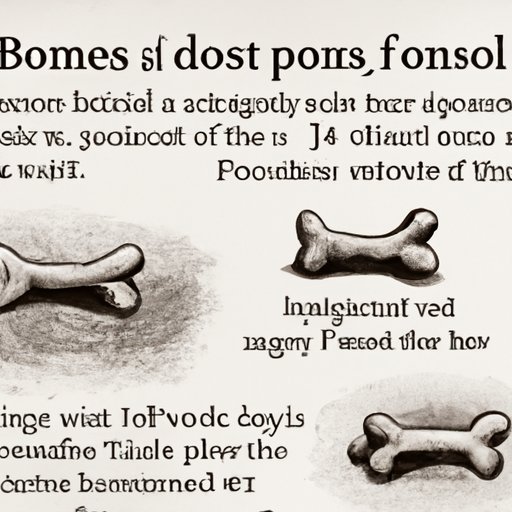Why Do Dogs Like Bones?
Dogs and bones – it’s a love story that seems as old as time. For as long as humans have kept dogs as pets, they have also given them bones to chew on. But why do dogs like bones so much? Is it just a primal instinct, or is there a scientific reason behind it? In this article, we will explore the topic of why dogs like bones in depth.
Importance of Understanding Why Dogs Like Bones
Before we delve deeper into the topic, let’s first understand why it’s important to recognize why dogs like bones. For starters, giving your dog a bone to chew on can keep them occupied for hours, providing mental stimulation and preventing destructive behavior. Additionally, knowing what kind of bones are good for your dog, and how often to give them, can help keep your pet healthy and happy.
Scientific Exploration
Bones are rich in several nutrients that dogs need to maintain good health. These include calcium, phosphorus, and magnesium. These minerals play a crucial role in maintaining strong bones, teeth, and muscles in dogs. Bones may also contain small amounts of other minerals, such as zinc and iron, and vitamins such as vitamin A.
According to the American Kennel Club, chewing on bones not only improves dental health but also helps scrape tartar and plaque buildup from a dog’s teeth. Regular chewing on bones may also help relieve boredom and stress, allowing dogs to release pent-up energy and emotions.
While bones are a great source of nutrients, it’s essential to note that too much bone in a dog’s diet can lead to constipation, blockages, and other digestive issues. Additionally, cooked bones, as opposed to raw bones, can splinter and cause injuries to a dog’s gastrointestinal tract.
Historical Perspective
The relationship between dogs and bones can be traced back to their domestication. Wild dogs were scavengers and hunters, and gnawing on bones helped them to clean their teeth, supplement their enolase, and fulfill their desire to chew.
In ancient civilizations, dogs were often kept for their protective instincts, and bones were given as rewards to encourage this behavior. Bones were also seen as a way to connect with hunting dogs, as they could recognize the scent of their prey on them and feel a sense of fulfillment.
Behavioral Analysis
There are several theories behind why dogs are naturally drawn to bones. Dr. Stanley Coren, a professor of psychology at the University of British Columbia, suggests that dogs may have a natural attraction to bones due to their carnivorous background and their hunting instincts.
When it comes to the benefits of bones, some argue that the act of chewing on a bone provides psychological benefits, such as satisfaction and comfort. The repetitive motion of gnawing on a hard object may help relax a dog, providing them with a sense of calmness and security.
It’s worth noting that not all bones are the same for dogs. While some dogs may enjoy chewing on beef femurs or pork knuckles, others may prefer softer bones like chicken or fish. It’s important always to supervise dogs while chewing on bones and to choose the appropriate bone size for the dog’s breed and size.
Anecdotal Experiences
Many dog owners and trainers have their own experiences to share about their dogs’ love of bones. Dog behaviorists often recommend bones as their first line of defense against bored and destructive behavior. In several online forums, owners have shared their funny and memorable stories of their dogs hiding bones around their homes or stealing them from each other.
It’s also worth mentioning that the belief surrounding dogs and bones is deeply ingrained in popular culture. Children’s stories like “Lady and the Tramp” and “101 Dalmatians” often feature dogs eating bones, which can create a sentimental attachment for some dog owners.
Fun Facts and Tips
It’s essential always to supervise your dog when giving them a bone. Never give cooked bones to dogs, as they may splinter and injure their digestive tracts. If you plan on giving your dog bones as a treat, it’s best to consult with a veterinarian, as certain breeds and dogs with jaw anomalies may have different chewing capabilities.
Bones come in various sizes and shapes, and it’s essential to know which ones are appropriate for your dog. Larger dogs may be able to handle larger bones, while smaller dogs may need thinner or softer bones. It’s also essential to limit the number of bones given to a dog, as too much bone consumption can lead to constipation.
Conclusion
Dogs and bones are undoubtedly a match made in heaven. As we have explored in this article, there are several reasons why dogs have a natural inclination towards bones, from their evolutionary background to their psychological needs. Knowing what kinds of bones are good for your dog and how to properly administer them can contribute to your pet’s overall health and happiness. Next time you treat your dog to a bone, you’ll have a greater appreciation and understanding of why they love them so much.
